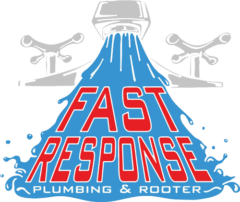Understanding Toilet Repair

When it comes to fixing toilets, it’s important for us to recognize the frequent issues that arise and what skills and tools we need. With this knowledge, we can determine if a DIY approach is possible or if we should call a professional plumber for help.
Common Toilet Problems Explained
Toilets can have a few common issues that we can often tackle ourselves. A clogged toilet usually happens when something blocks the pipes. We often find that a good plunger can solve this. A running toilet might mean the flapper inside the tank isn’t sealing right. This can waste lots of water and might only need a flapper replacement.
Another issue we’re likely to see is a leaking toilet. This could be due to worn-out seals or perhaps a problem with the connection at the base. Sometimes the leak is silent, and we may only notice it through a higher water bill. Addressing these problems promptly prevents further complications and saves us money.
Tools and Skills for DIY Toilet Repair
We need the right tools to fix toilet problems efficiently. A basic toolkit should include a plunger, wrench, and a set of screwdrivers. These are helpful for simple fixes. For more advanced tasks, like replacing a flapper, it’s useful to have a pair of adjustable pliers, too.
Our skill level matters because some DIY toilet repairs are easier than others. Knowing how to turn off the water supply is essential. With some patience and the willingness to learn, many straightforward repairs are within our reach. However, knowing our limits keeps us from turning small issues into big ones. When in doubt, it’s wise for us to consider getting help from a professional.
DIY Repairs and When to Consider a Professional

In our homes, we may face plumbing issues that seem minor but could become bigger problems if not handled right. While some repairs like fixing leaky faucets and unclogging drains can be managed on our own, more complex issues often require calling in professional plumbers.
Fixing Leaky Faucets and Unclogging Drains
Leaky faucets are a common issue for homeowners. They can often be fixed with a few simple tools, like a wrench and some replacement parts. Tightening a connection or replacing a washer may stop the drip and save water.
Unclogging drains is usually a DIY task. Basic tools like a plunger or drain snake often do the trick. If one of our drains is slow to empty or clogged, trying these methods can often solve the problem.
These simple fixes can save us money and avoid calling for professional plumbing services. It’s cost-effective and we can quickly address small issues without waiting for help.
Complex Issues and Professional Assessment
Some plumbing issues are not as straightforward. Problems like sewer line clogs, significant leaks, or continuously running toilets could indicate complex plumbing issues. We might also face problems involving a wax ring replacement or plumbing systems that are beyond the usual DIY scope.
In these cases, calling a professional plumber is advisable. They have the specialized tools and knowledge to assess and repair intricate issues. Professional plumbers help us avoid potential water damage that can occur from a mishandled repair.
Though professional plumbing services may come with a higher cost, they provide a reliable solution to serious problems, ensuring our plumbing systems remain in good health. Sometimes, our effort and skill set can only get us so far, and that’s when a professional assessment is valuable.
Upgrading and Preventing Future Issues
When we think about maintaining our toilets, conducting careful upgrades can extend the life of our plumbing systems. Such improvements not only keep everything running smoothly but also prevent larger issues down the line.
Toilet Replacement and Maintenance Strategies
When it’s time for a new toilet, choosing the right one is key. We should look for models with water-saving features. Newer designs use less water per flush without sacrificing performance. Always check reviews and ratings to ensure we get a reliable model.
Maintenance is equally important. We need to inspect shutoff valves and supply lines regularly to catch small leaks before they become big problems. Tightening loose fittings and replacing worn parts are effective DIY plumbing tasks. Our proactive approach can help avoid unexpected breakdowns.
Handling Sewer Line Complications
Sewer line issues are more complex than regular plumbing tasks. We must watch for slow drains or unusual noises, which might hint at a sewer problem. These issues can lead to serious damage if ignored.
If we suspect a problem with our sewer lines, calling in a professional is smart. They have tools, like cameras, to inspect lines without digging. Regular checks and maintenance can prevent costly repairs. Putting this into practice safeguards our home’s plumbing system in the long term.
